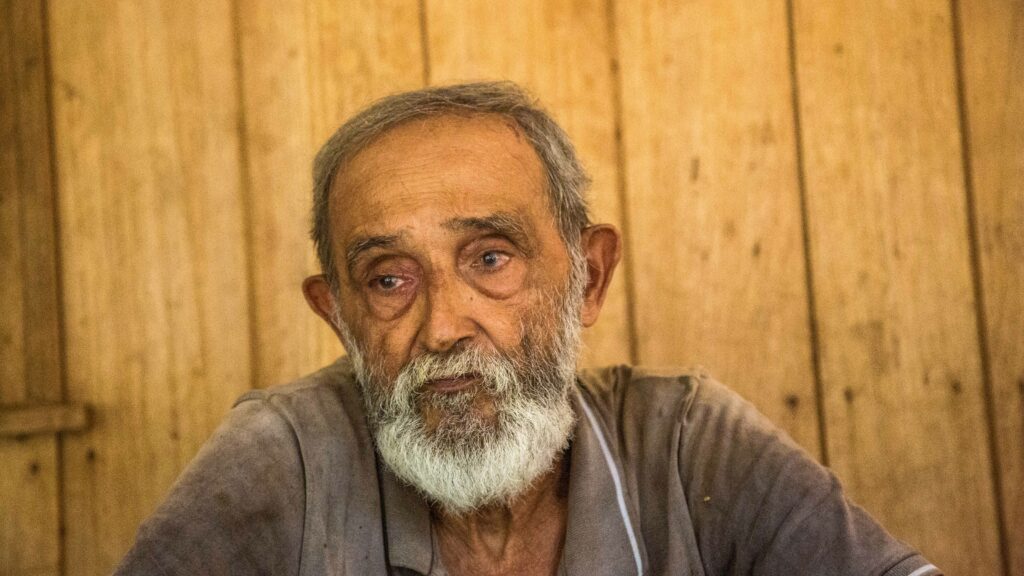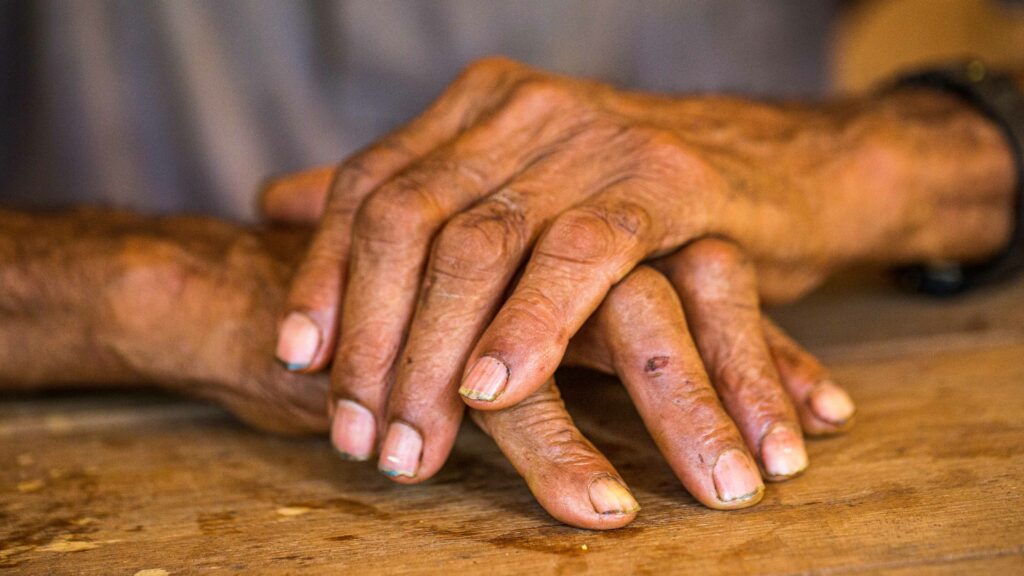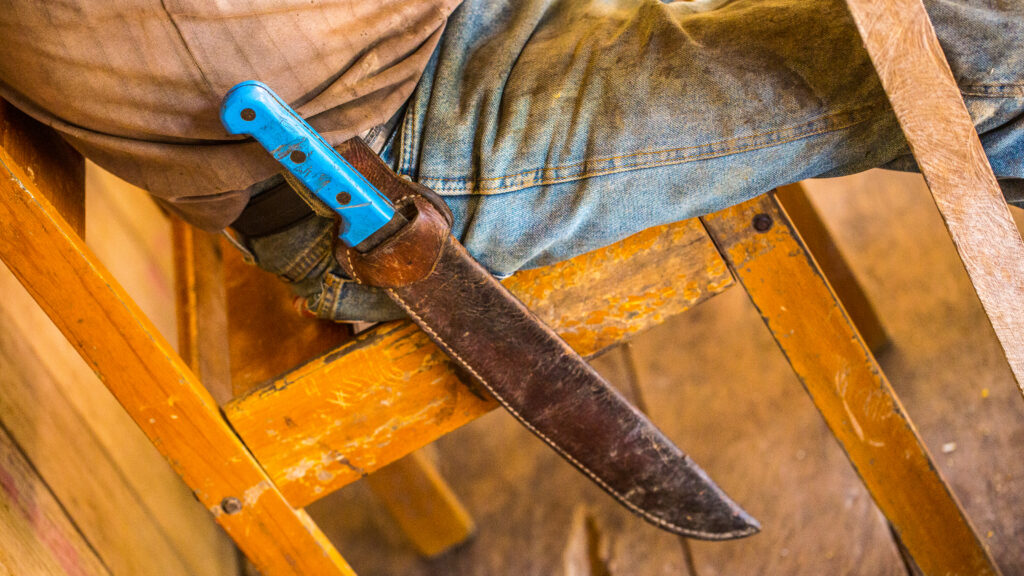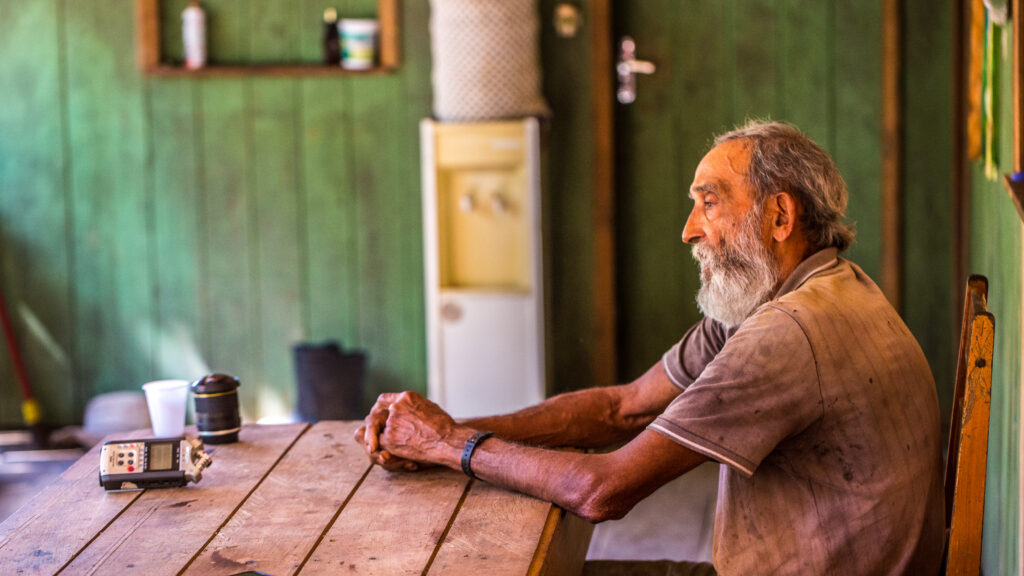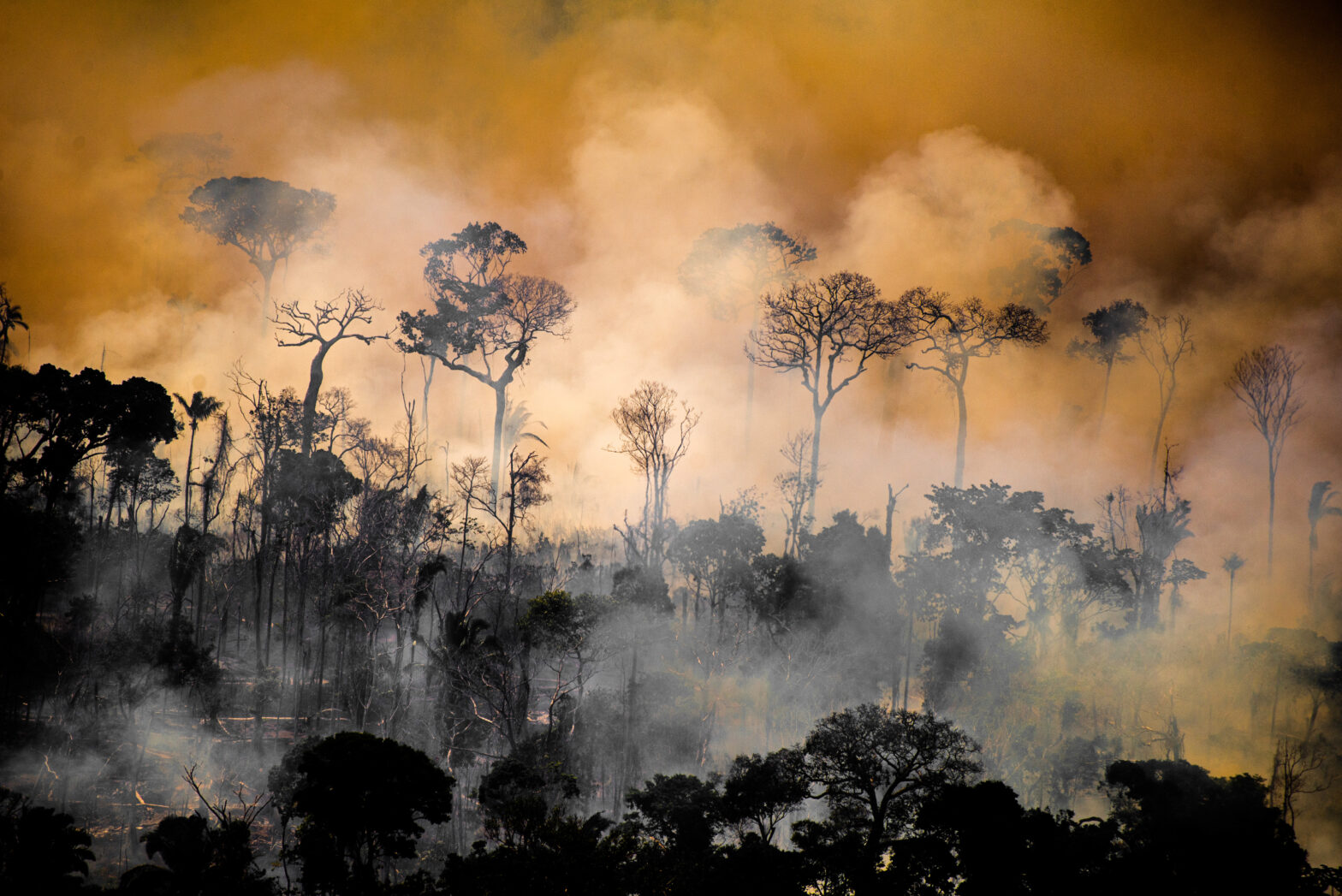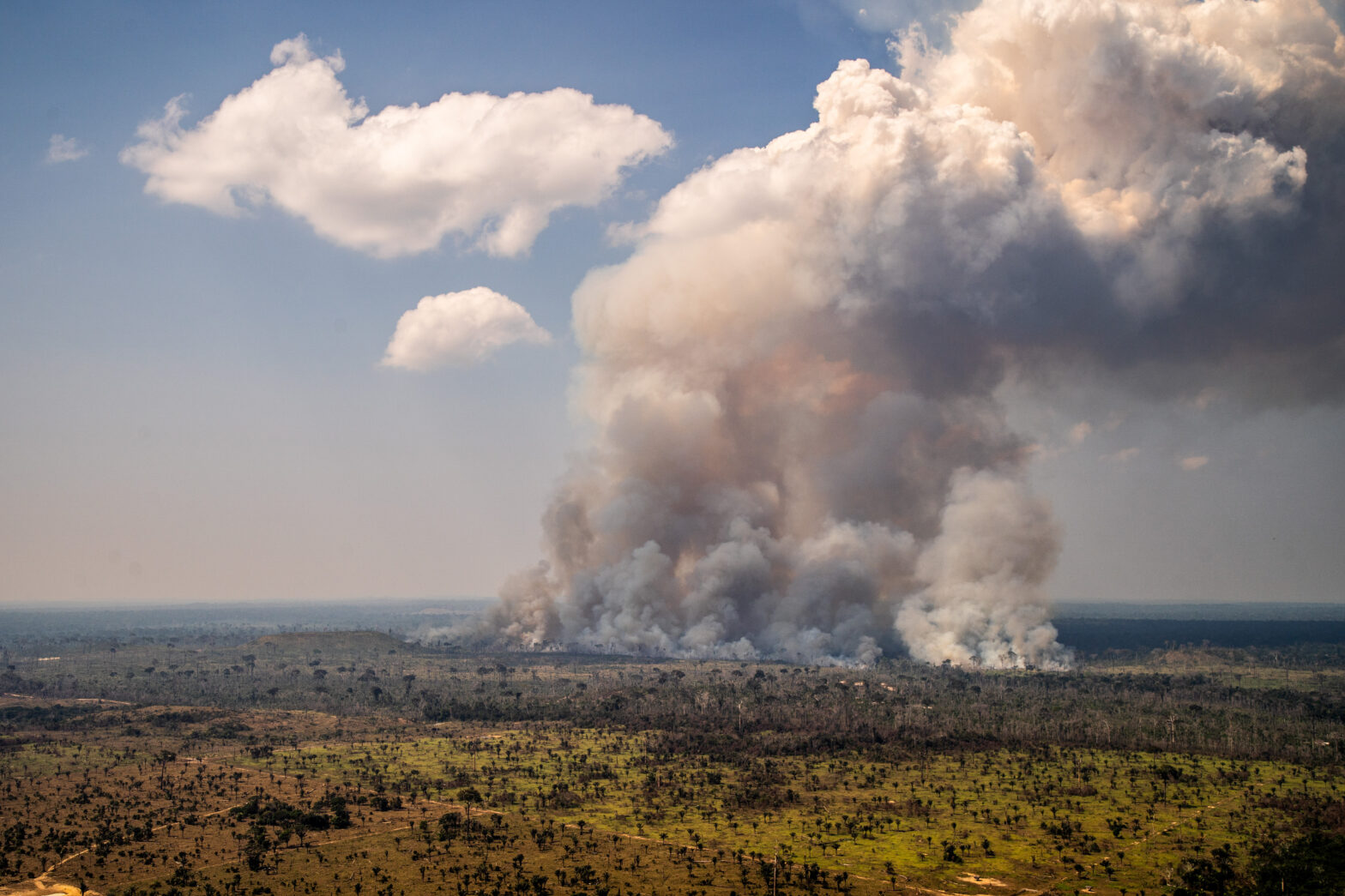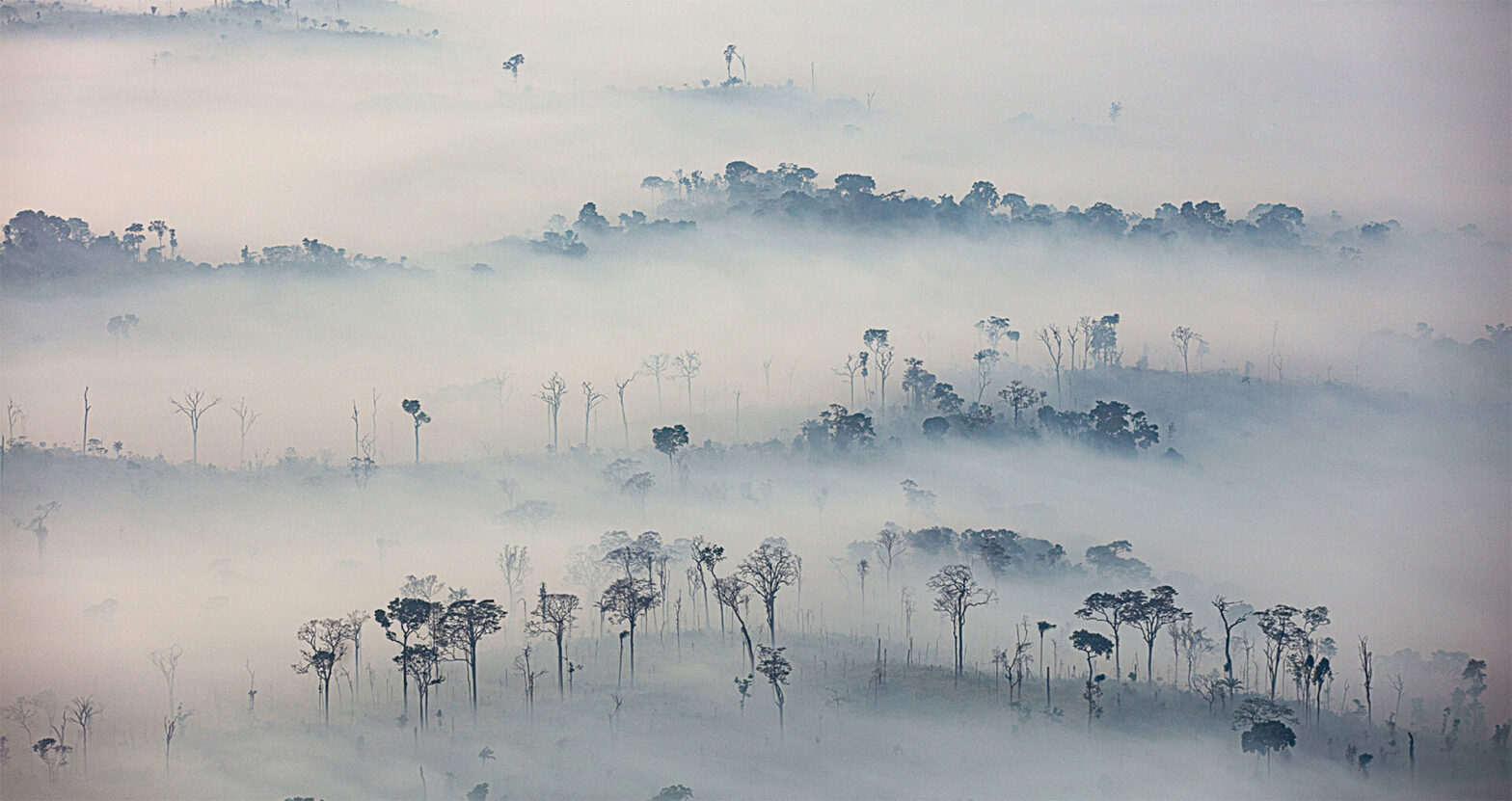As well as the capital Rio Branco, Xapuri and other towns in the interior suffer from pollution above safe limits for human health
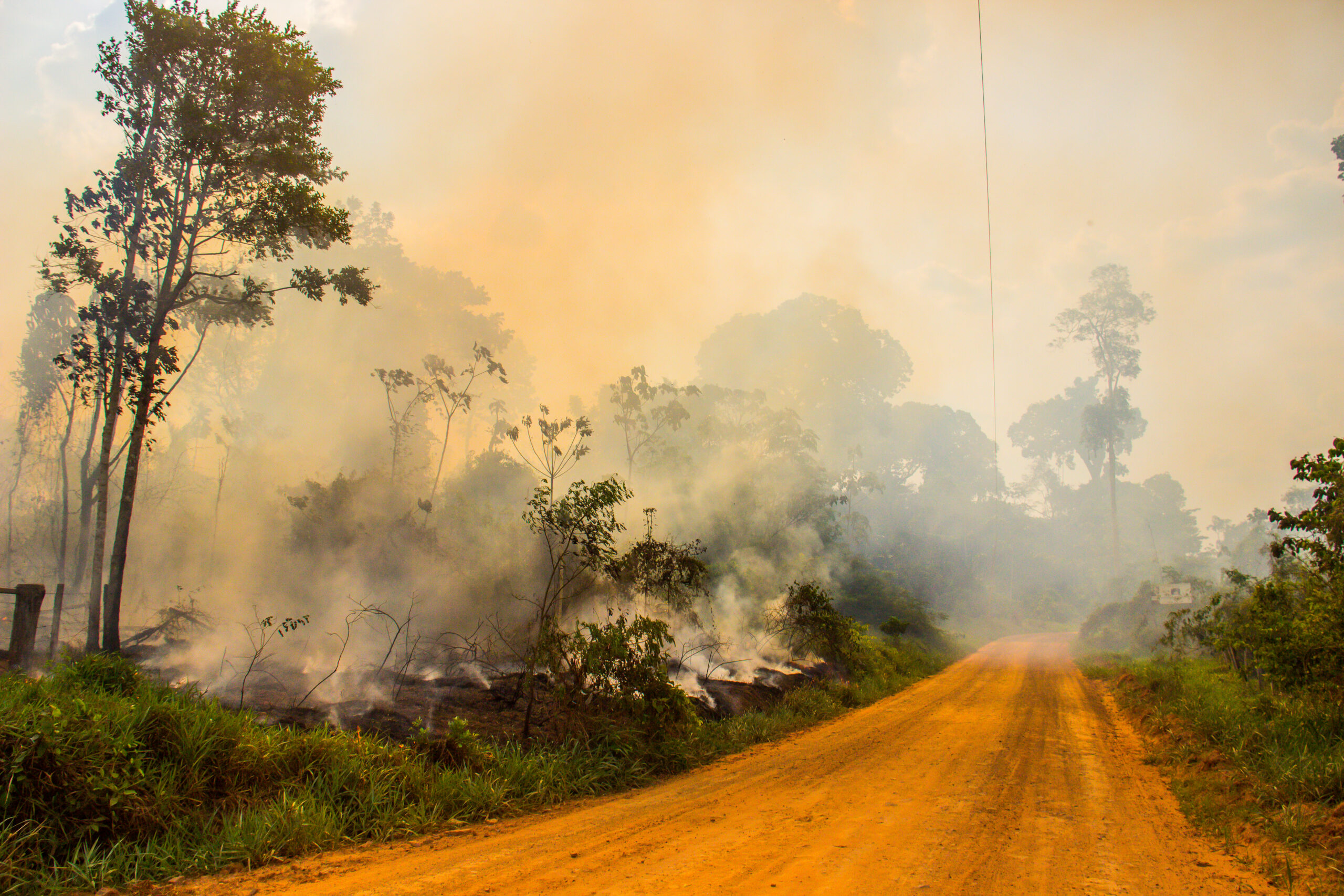
Fire and smoke inside the Chico Mendes Extractive Reserve in Xapuri
Photo: Ramon Aquim
The problem of air pollution in Acre is the best documented in the whole Amazon region. The main reason for this is an air quality monitoring project, created by scientists at the Federal University of Acre (UFAC), which has resulted in the installation of at least one portable sensor in every municipality in the state, including in historic Xapuri. The place where the life of 77-year-old forest extractivist leader Raimundo Mendes de Barros, cousin of rubber tapper and environmentalist Chico Mendes, was never the same following Covid-19.The virus reached the forests of Xapuri in the middle of last year. Raimundão, as he is known, was diagnosed with the disease in September, after a family member tested positive.
From that moment on, the combative rubber tapper, who survived the turbulent 1970s and 80s, when conflicts between ranchers and rural workers exploded in Acre, became increasingly dejected. Trips to the forest garden and rubber trails at his place in the Chico Mendes Extractive Reserve in rural Xapuri, are no longer what they used to be. Every 500 metres he has to sit down to catch his breath. Cramps in his legs and arms have also become routine.
Raimundão was hospitalized with Covid at the height of the fires in 2020
Photos: Ramon Aquim
“Sometimes I go to the forest to tap rubber or hunt and when I’m late back my boys and my partner get worried. At night, when I go to bed, I feel dreadful. So much dreaming and crying out! Some nights I almost scream with these cramps. I don’t cry because I pretend to be strong. But the truth is, I’ve been feeling more fragile every day. I have the impression is that my life is on the line”, said the old-timer, who after Covid-19 discovered a nodule in his lung.
So much dreaming and crying out! Some nights I almost scream with these cramps. I don’t cry because I pretend to be strong. But the truth is, I’ve been feeling more fragile every day. I have the impression is that my life is on the line
raimundo mendes de barros
extractivist leader, Chico Mendes Extractive Reserve
Alongside Chico, Raimundão was at the forefront of the movements in defence of the environment and forest workers in the upper Acre region, thereby becoming a living legend in the state’s recent history. Like his cousin, there was a price on his head, but he managed to avoid the same fate and has lived on to further Chico Mendes’ legacy.
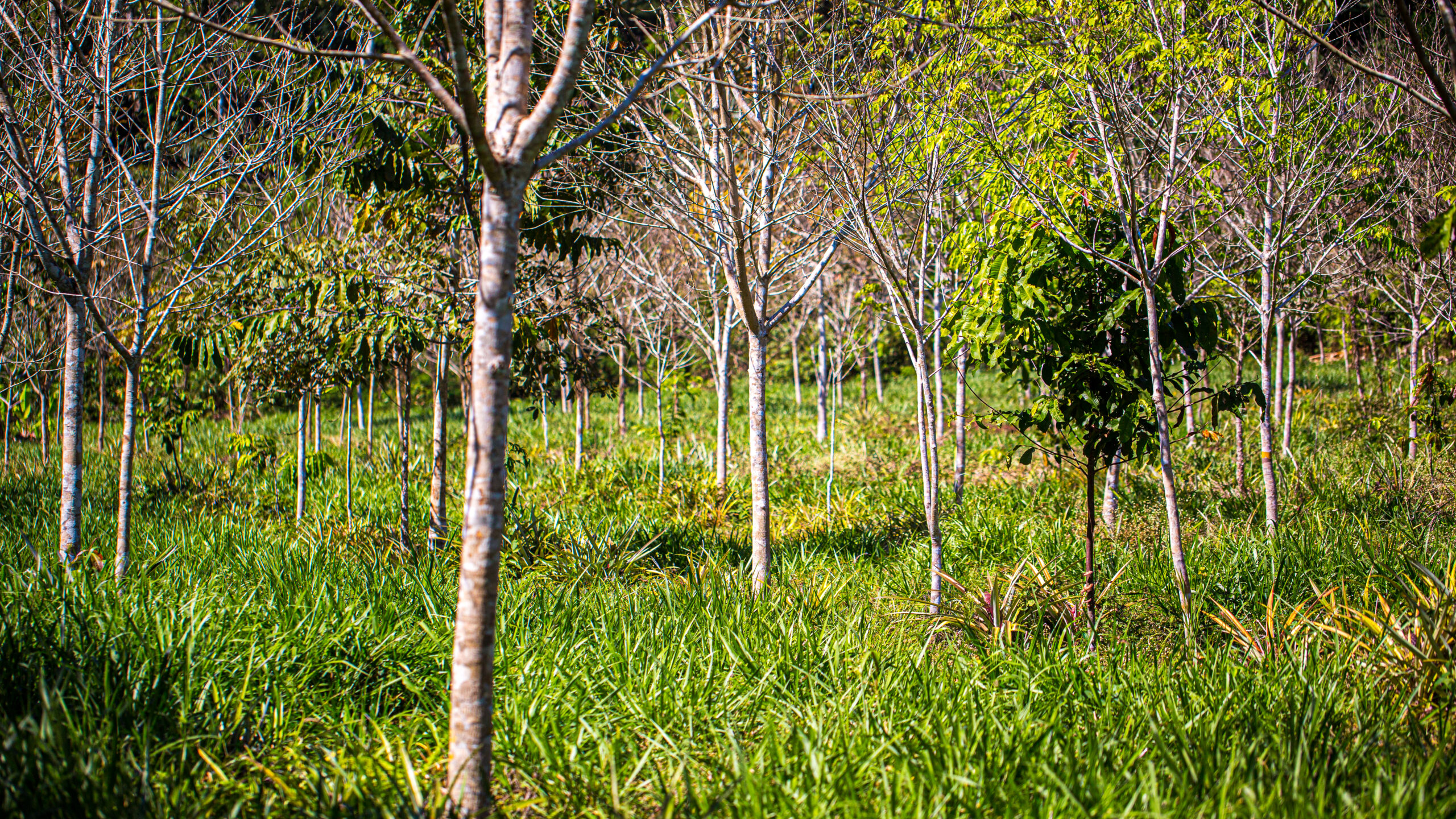
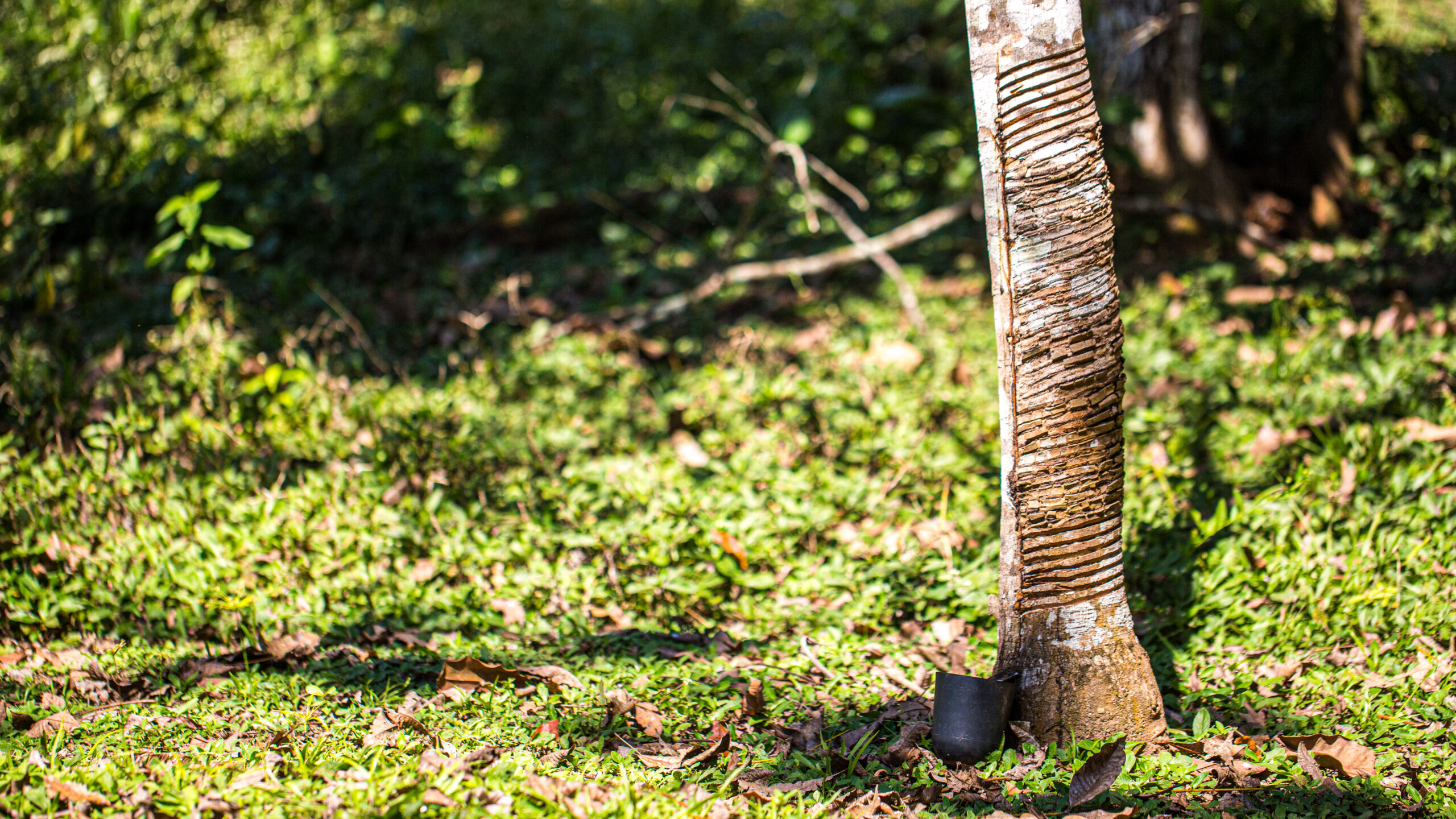
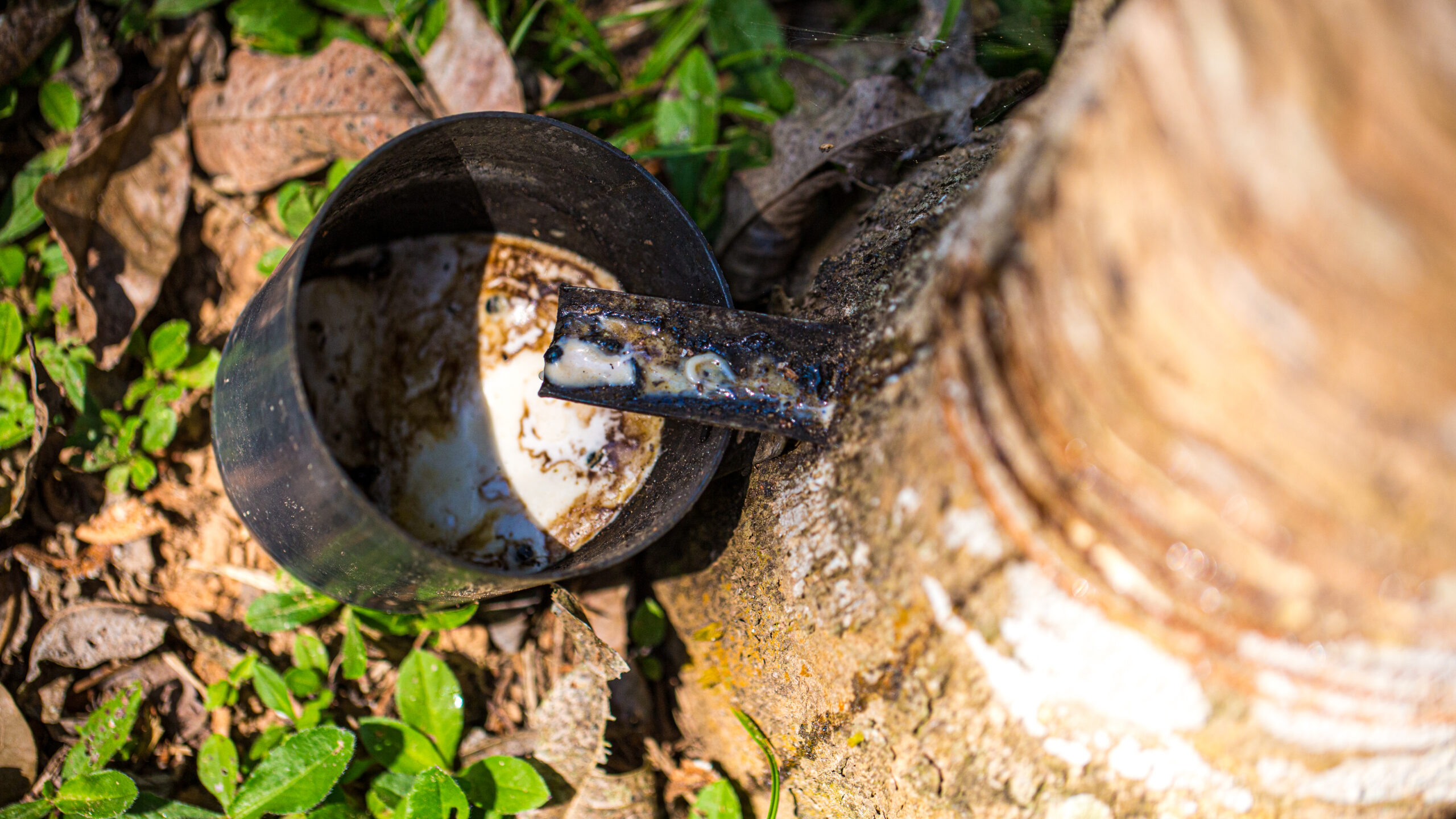

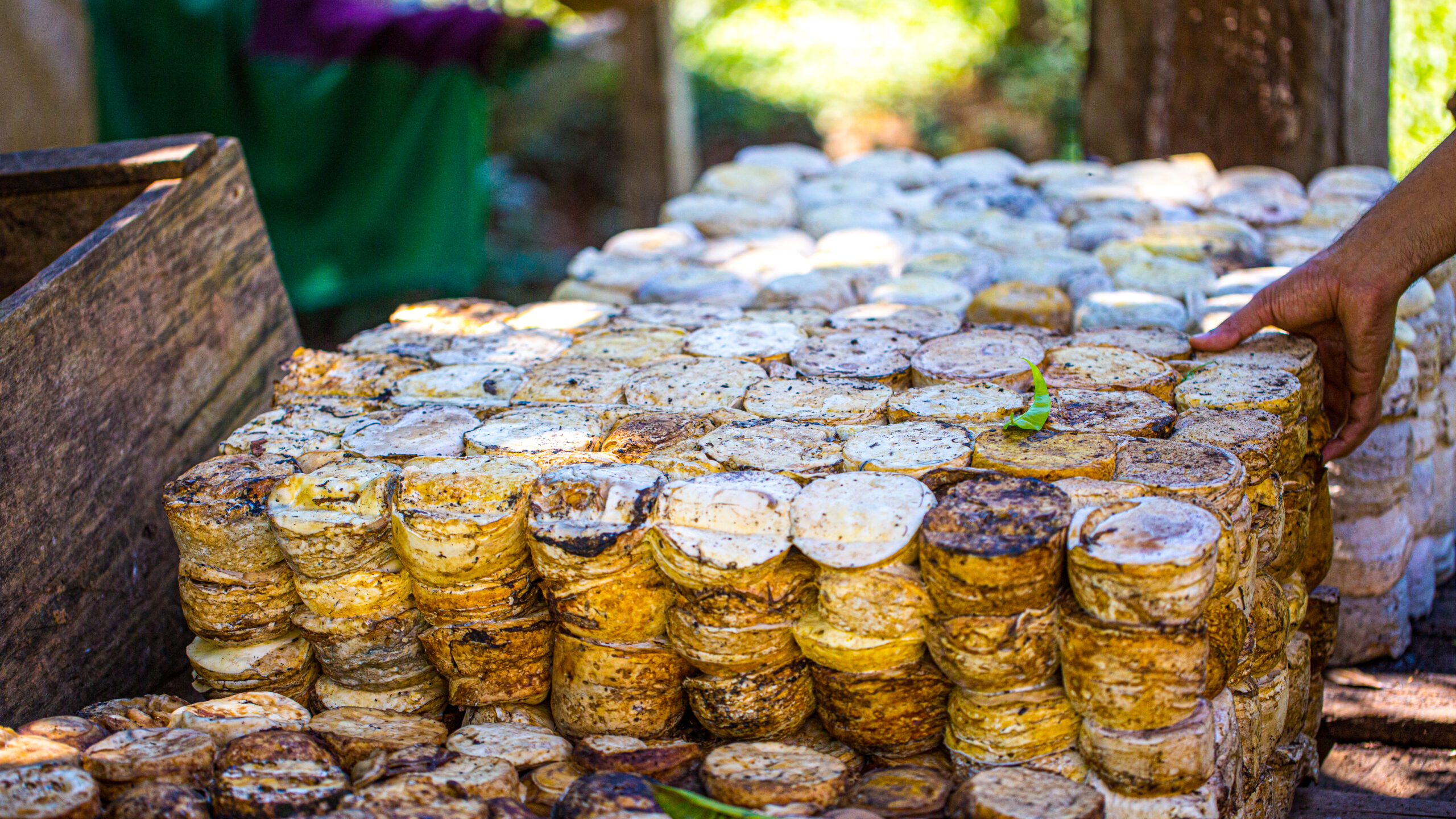
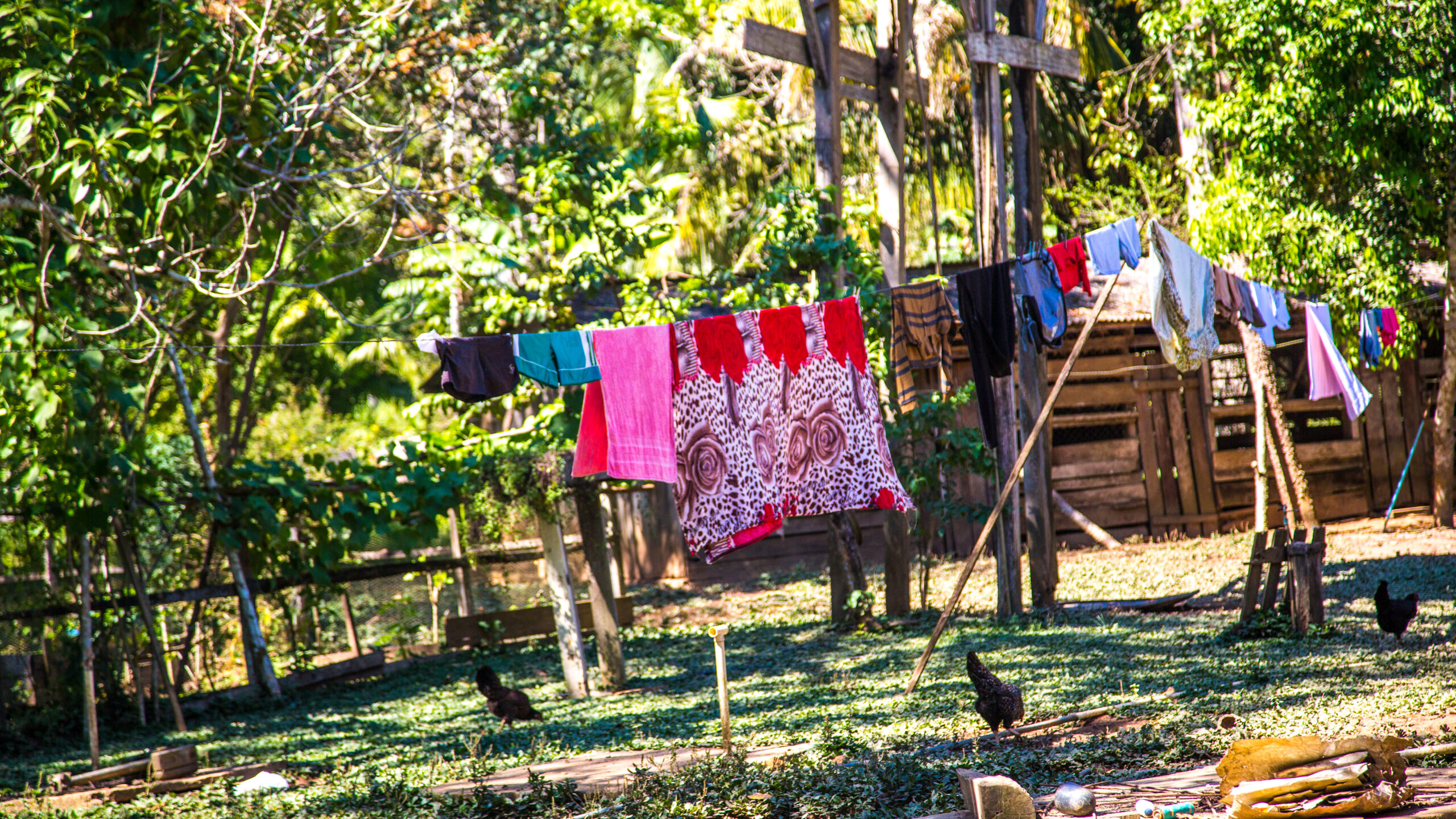
Decades ago, in the rubber estates, it was common for boys to start smoking very early. Raimundo lit up his first cigarette at the age of eight. More than five decades of smoking have left scars on the old rubber tapper’s health, which may have contributed to the worsening of his Covid-19 condition and its aftereffects. Also weighing against his wellbeing is the fact that he lives in the epicentre of the fires in Acre’s protected areas.
According to the National Institute for Space Research (INPE), during the fire season last year, which runs from July to October, the Chico Mendes Extractive Reserve concentrated more than 70% of fires in federal protected areas in the state, with 4,243 heat sources, according to the S-NPP/VIIRS (NASA) satellite. In September, the same period in which Raimundão was diagnosed with Covid-19, Xapuri was blanketed by smoke. Of the thirty days of that month, 26 saw air pollution above World Health Organization (WHO) acceptable levels. The municipality was second only to the capital, Rio Branco, which saw 27 days in September when concentrations of particulate matter reached levels harmful to human health.
These materials are very fine solid fragments arising from forest fires, as well as from the burning of fossil fuel, dust, and other sources. For the WHO, a concentration of particles with a daily average of more than 25 ug/m³ (micrograms per cubic meter) in diameter may already cause health problems, if there is prolonged exposure. And it was this relationship between persistent exposure to particulate matter and the worsening of respiratory diseases that the InfoAmazonia analysis confirmed.
[5.1]
In Xapuri, the increase in the amount of microparticles is linked to an increase in September, of 94% in hospitalizations for severe acute respiratory syndrome (SARS) and 68% for Covid-19, according to the InfoAmazonia analysis. During the entire fire period, during which the municipality saw an average 12.3 days per month with pollution above recommended levels, the increase in hospitalizations for SARS and the new coronavirus was 37% and 28%, respectively.
Raimundão is in no doubt that the smoke further damaged his health. “Every year during the smoke I get sick. There were days when I almost died choking. I even sought medical help to relieve this suffocation. I’m thinking about the coming weeks when they start burning for real”.
Environmental pressures
For years the Chico Mendes Extractive Reserve and its surrounding area has been under pressure, from deforestation, fires, illegal land occupation, and livestock in excess of permitted levels. According to Raimundão, who was previously an advisor on rural affairs to the government of Acre and is therefore well versed in the dynamics of what happens in the area, these are the practices most responsible for the pollution inflicted on both rural and urban residents.
“I think that some of these diseases that affect the population are partly to do with this debate about our forests, with burning and deforestation. This undoubtedly puts the health of our population at risk”.
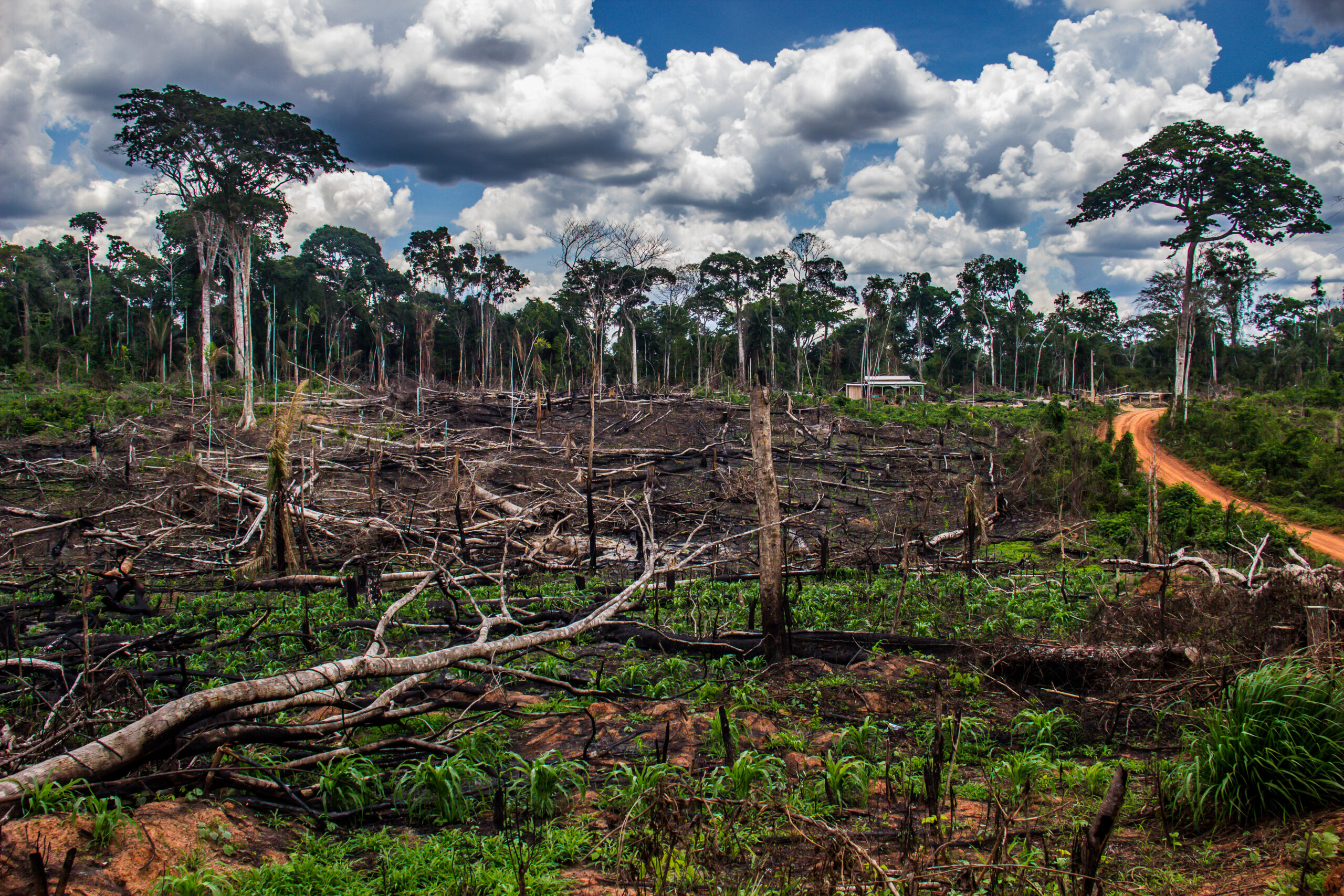
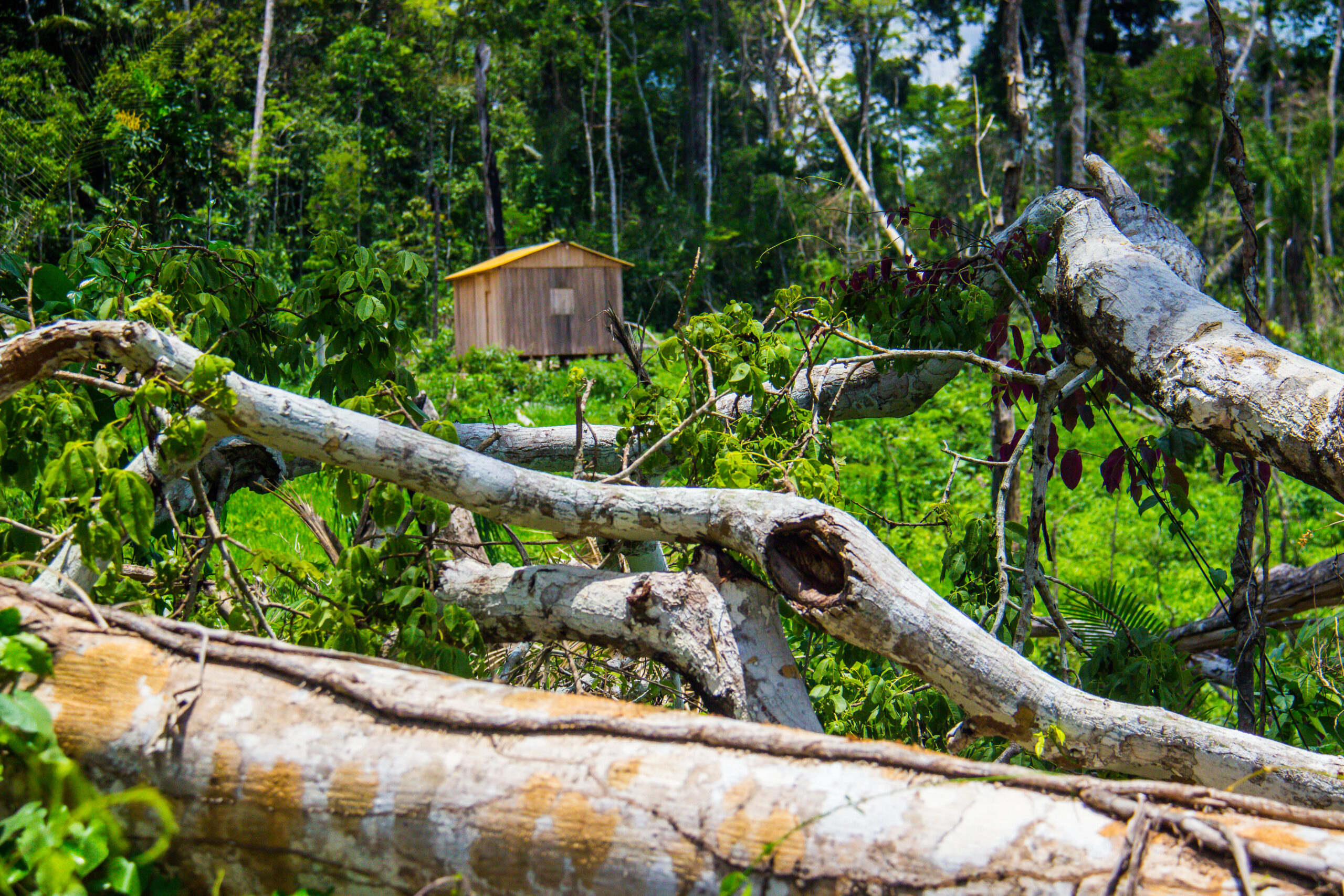
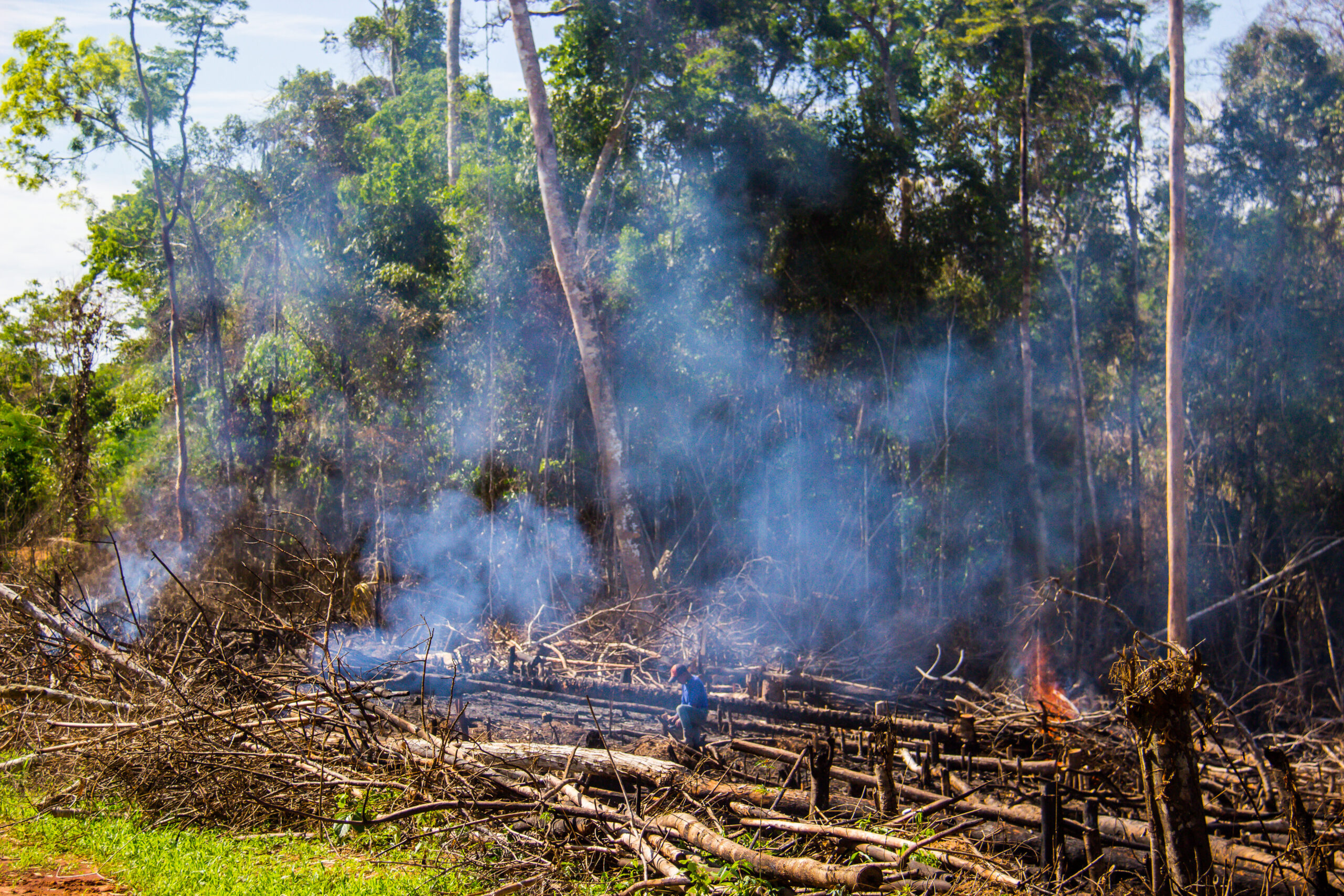
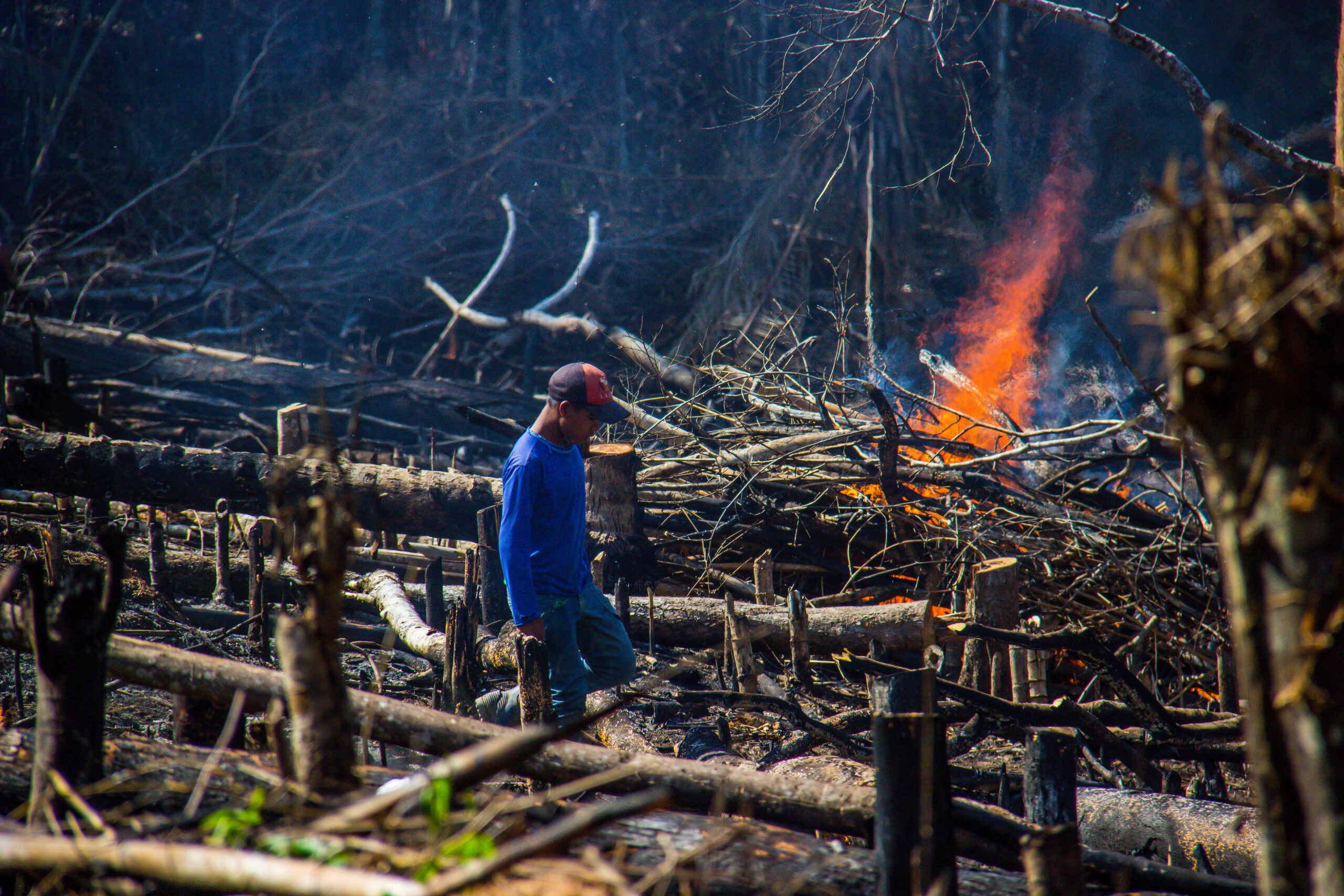


He denounces the distortion of the principle of the reserve by some residents who burn and deforest beyond what is allowed. “Many do not behave properly and carry out this depredation. There are people who think they own their area, but we are legal squatters with use rights, as long as we look after the area [which belongs to the Brazilian state]”.
He also highlights the interest of people from outside the reserve in using its land for cattle raising. “Now people from Rondônia are arriving and are causing a real mess. These people sell forty hectares of land there for R$10,000 a hectare and when they arrive here, they can buy as much as 200 hectares at a price of R$1,500 to R$2,000 per hectare. So, people here are deluding themselves. They are parcelling up their land to sell, leading to increased deforestation here with fires that harm people’s health”.
Sonaira Silva, PhD in Forest Sciences from UFAC, also argues that logging is closely linked to air pollution not only in the Chico Mendes extractive reserve, but throughout the Amazon. The researcher, a scientific consultant to InfoAmazonia studies, explains that most deforestation in the region takes place to open up areas for production, but she also cites land speculation as a cause. However, she stresses that it is medium and large producers, and not family farming, that cause the greatest impacts.
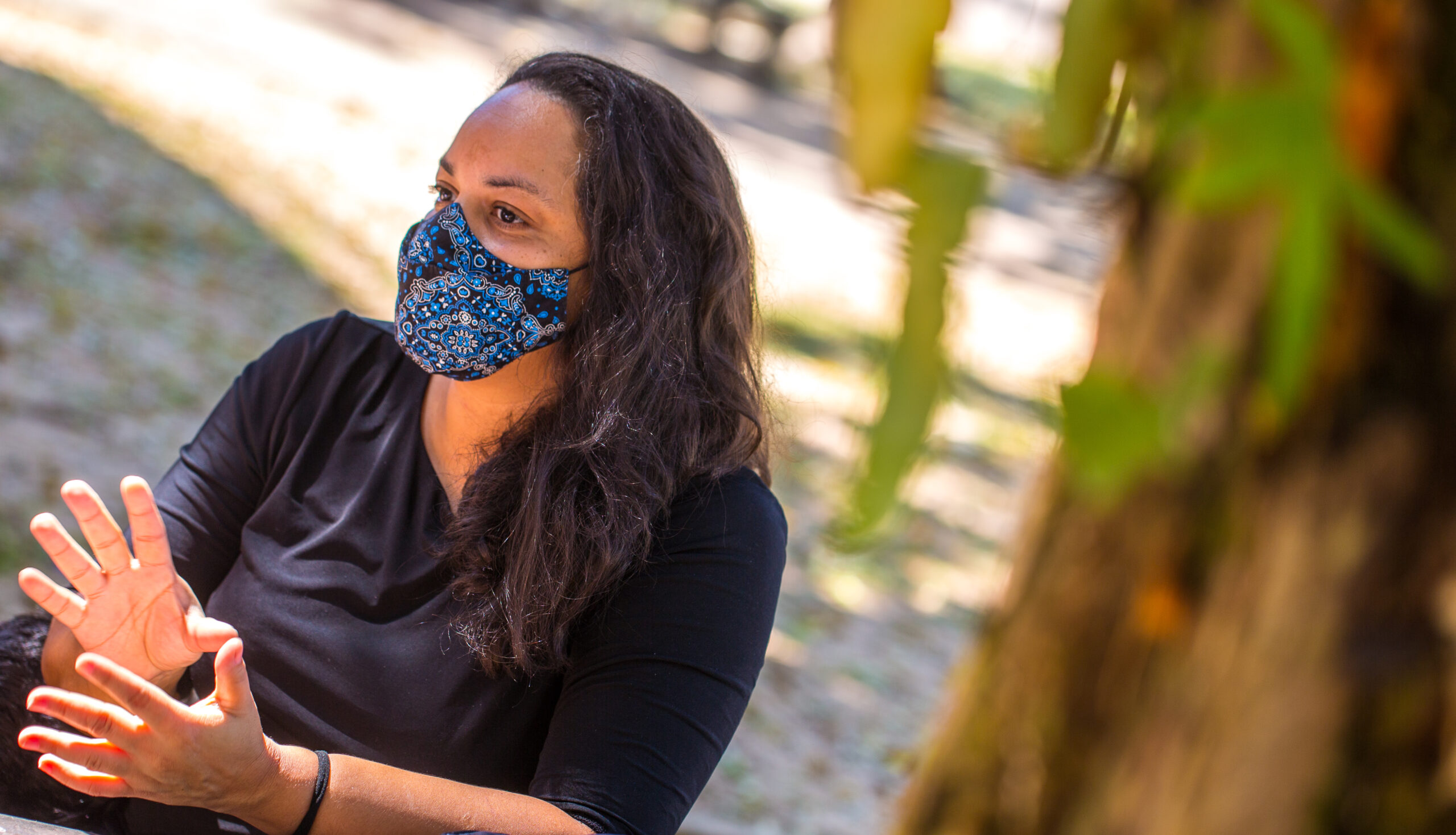
Scientist Sonaira Silva, coordinator of the air quality monitoring network
Photo: Ramon Aquim
“Those responsible for most of the deforestation in the Amazon are the large producers. They cause the most pollution. In Acre, for example, the clearing of more than ten hectares represents more or less 60% of the total”. Silva also notes that in the state about 40% of fires occur in recently deforested areas, while the remainder is to re-clear land already used, such as pasture and secondary growth.
Those responsible for most of the deforestation in the Amazon are the large producers. They cause the most pollution. In Acre, for example, the clearing of more than ten hectares represents more or less 60% of the total
sonaira silva
Researcher, Environmental Applied Geoprocessing Laboratory (LabGAMA) of the Federal University of Acre
In her view, the cause of the problem is the low cost of burning to transform the land. “They set fire to it because that’s the cheapest technology. You just need an ignition source, and all that organic material is gone in days. There are technologies such as mechanization and alternative cultivation systems, but these are not available to all farmers. In addition, large producers, who do have money and knowledge, often do not want these alternatives because fire is cheaper”.
Monitoring pollution
Sonaira has a detailed understanding of the role of fire in air pollution. She is one of the coordinators of the team that uses portable sensors to try to understand the relationship between fire and the pressure it causes on the population’s health. Across the state, data related to particulate matter present in the air is measured daily by 33 instruments, with at least one in each municipality. The largest monitoring network of this type in the Amazon is connected to the internet and measures levels of impurities every 80 seconds.
The work began in the late 1990s, with the installation of a single sensor on the UFAC campus in Rio Branco by professors Irving Foster Brown and Alejandro Duarte. The device, which used solar photometers, only worked during the day, and had high acquisition and maintenance costs, but allowed the first smoke measurements in Acre. It was only in 2019 that low-cost, internet-connected devices (the PurpleAir PA-II-SD) were installed in every municipality in Acre following the decision of the state public prosecutor’s office (MPAC) to fund the idea. The equipment bought by the agency is located at the MPAC headquarters itself and is regularly checked.

Particulate matter sensor installed at the head office of the MPAC
Photo: Ramon Aquim
“Acre was the first in the Amazon region to have these sensors,” says Brown, PhD in Environmental Sciences. For him, monitoring air impurities in the state is important not only for health and the environment, but also for the economy.
“First, we need to know the size of the problem. Everyone here has lived through periods with extreme levels of pollution. But how high were these levels? How great was the population’s exposure? The more we understand the seriousness, the better societal decision-making will be. But as well as human health, we also know that all of this has impacts on vegetation and on animal health. In Acre, there are more cattle than people. What if pollution is hurting livestock productivity? They are more susceptible to smoke because they live in the area. It’s good to put such cost analyses into the equation to assess whether it’s really worth burning.”
First, we need to know the size of the problem. Everyone here has lived through periods with extreme levels of pollution. But how high were these levels? How great was the population’s exposure? The more we understand the seriousness, the better societal decision-making will be.
irving foster brown
Scientist Foster Brown initiated the monitoring in Acre

Scientist Foster Brown initiated the monitoring in Acre
Photo: Dell Pinheiro
Analysis of sensor data is carried out by the Laboratory for Geoprocessing Applied to the Environment, LabGama, set up by Sonaira and other UFAC researchers. In a partnership with the MPAC, universities and municipalities, the group coordinates the Acre Air Quality Monitoring Network, with a website where it is possible to see measurements in the municipalities in real time. These sensors helped to validate the InfoAmazonia analysis data, allowing comparison of the values recorded locally with those detected by the satellites.
Daily average of particulate matter in Acre, 2020
Comparison of the data from sensors and the satellite data used by the InfoAmazonia analysis
Source: LabGama/Ufac, CAMS-NRT and InfoAmazonia
“The idea is to offer an easy-to-view tool and to create an environment where everyone can see the data and extract information,” says the professor. Created by researcher Willian Flores, also from UFAC, the portal also offers maps, personalized graphics by municipality, and the evolution of pollution since 2019.
For Sonaira, this work has a social purpose that aims to contribute to changing the scenario of degradation that is moving across Acre and the rest of the Amazon. “We make a point of sending these alerts and map readings to the government to put pressure on them. Showing the size of the problem is important. So, what we’ve been doing is to say, through the data, that pollution is permanent, that every year we suffer from smoke and that if we don’t change this, there will come a moment when the climate issue will be irreversible. Smoke is not one-off; it is not a problem only for that moment. It is a cumulative process in human bodies”.
Exporting pollution
In the Amazon, some locations contribute more to pollution than others. Nevertheless, microparticles can travel hundreds of kilometres, following the direction of the winds, which in the region blow from east to west. This explains the high levels of smoke in places that do not make a significant contribution in terms of fire.
“The question of smoke is not confined to the burning site because after burning, the polluted air enters the atmosphere and you have other components that shape this, principally the wind”, says Sonaira.
The normal wind that blows in the Amazon comes from the Atlantic Ocean and enters Brazil over Pará, in the most northerly region. Upon reaching the westernmost region of the country, where part of Amazonas and Acre states are located, the currents of air collide with the Andes mountains in neighbouring countries. These mountains act as a barrier to the wind, which alters its natural route and starts to head southeast, passing over Rondônia. Because of this, Acre and southern Amazonas are known as regions where the wind turns the corner [see article 2 of this series].
Wind currents
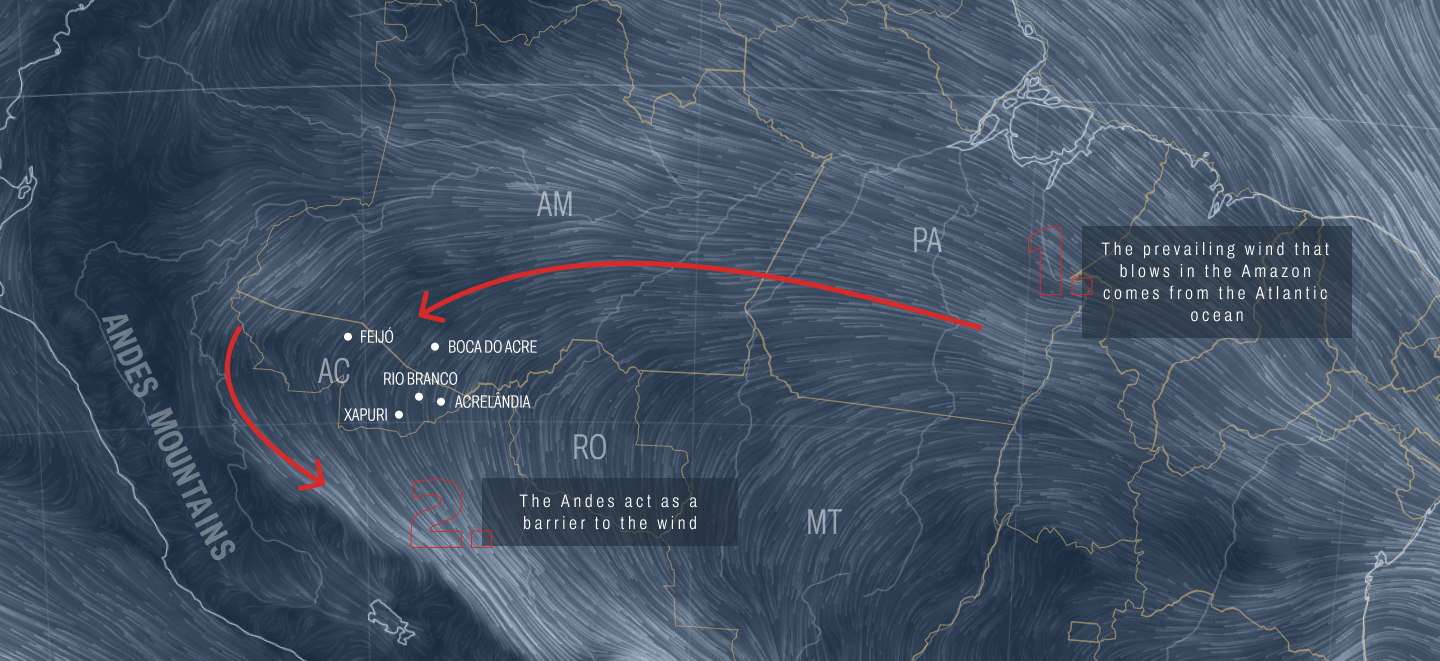
The prevailing wind in the Amazon dry season
Source: GFS / NCEP / US National Weather Service, 850 hPa altitude wind, 08/11/2020. Image: Earth
These air current dynamics also help to explain why municipalities in Acre with high levels of fire are not necessarily the most polluted.
Feijó, for example, which led the ranking of fires in Acre between July and October, with 5,310 cases, had a lower average number of days per month with levels of pollution harmful to health than thirteen other local municipalities. In September, when fires broke the annual state record, the municipality, which was also the one that deforested the most, had 21 days with particulate matter levels above 25 ug /m³, while other municipalities had almost the entire month with pollution above recommended levels.
“Feijó is at the start of where this wind comes from. The air currents coming from Amazonas reach Acre there and also over Tarauacá and Cruzeiro do Sul and then make the turn towards the centre of the state. For Feijoenses to feel the smoke, there has to be largescale burning upwind of them, in Amazonas state. The pollution that this municipality causes flows to the easternmost part of the state, where Sena Madureira, Rio Branco, Xapuri, Brasiléia, and other municipalities are found”.
Acrelândia is the opposite example to Feijó. The city accounted for only 2.1% of the fires in Acre between July and October last year but is ranked as the most polluted for the period, with an average of 14.8 days per month with levels of inhalable microparticles harmful to health.
FIRES and air pollution
Acre municipalities with high levels of burning are not necessarily the most polluted.
Days with higher than recommended levels of particulate matter (PM 2.5) in 2020.
Fonte: focos de calor detectados pelo satélite S-NPP/VIIRS – Inpe, PM 2.5 – análise do InfoAmazonia
In these four months, the municipality recorded an increase of 46% in hospitalizations for SARS and 34% for Covid-19. In September alone, these increases were 94% and 68%, respectively. “Acrelândia also concentrates a large part of the smoke from Feijó and Sena Madureira. This pollution also comes from Boca do Acre, in Amazonas, which burns a lot, as well as from Rondônia, and that cause this bubble here”, explains Silva.
Rio Branco, on the other hand, reveals a scenario different to Feijó and Acrelândia. The most populous municipality in Acre was third in the list of numbers of fires from July to October, with 10% of the outbreaks, and occupies the same position in the list of those most polluted, with an average of 13.3 days per month with levels of pollution harmful to health. The increase in hospitalizations for SARS and Covid-19 in this period was 34.3% and 25.4%, respectively.
However, the capital of Acre goes to the top of the list of pollution when just September is analysed, with 27 days of dirty air in the month. Hospitalizations for SARS jumped 99% and 71% for the new coronavirus.
Doctor Osvaldo Leal, director of the main hospital that treats cases of Covid-19 in the capital of Acre, notices every year an increase in hospitalizations for respiratory diseases in the burning season. “There is no doubt that smoke is an aggravating factor. When the relative humidity of the air falls, the airways become dry, favouring allergy events. July to October can be a period of great difficulty, especially for children and the elderly. Long-term smokers with significant lung alterations also suffer more in the dry months.”
In 2020, he estimates that smoke from fires may also have worsened the clinical condition of patients affected by the new coronavirus. “There are two distinct events. One is infection with a virus that depends on contact between people. The other is exposure to heavy, toxic air. These two things together do not increase the likelihood of the person becoming infected, but they can worsen the clinical condition of those who got Covid-19.”
Increase in hospitalizations for respiratory conditions
In the municipalities of Acre state during the 2020 burning season (July to October)
Source: InfoAmazonia analysis
Collective responsibility
All 22 municipalities in Acre recorded concentrations of particulate matter above recommended levels from July to October 2020. Over the whole year, Acrelândia had 66 days of pollution above recommended levels, heading the list. Rio Branco (63 days), Senator Guiomard (61), Bujari, Plácido de Castro and Porto Acre (60 each) also stand out in the data.
According to Foster Brown, at some moments of the fire season, Acre registers levels of pollution even higher than São Paulo, the largest metropolis in South America.
In 2020 Acre’s Air Quality Monitoring Network, which started in 2019 at his initiative, earned MPAC second place in the 17th Innovare Awards, which prize good legal practices across the country.
Air quality sensors in the legal amazon
Source: LabGama/Ufac
In August last year, the expansion of the network to other states in the Amazon began. A sensor was donated to each state in the Legal Amazon region by MPAC and the Woodwell Climate Research Center, but not all are in use. Once the sensors begin operations in every state, the public will have access to important information on the effect of fires on air pollution, according to Sonaira Silva.
“With the expanded network, we can see when the pollution sensor is turned on in other states. Knowing that Acre is a regional wind corridor, we will know when part of the pollution is coming from outside. And then we will be able to attribute legal responsibility in some form, criminally indicting public authorities or asking them to control fires in their area, because the problem also affects us here. It creates a sense of collective responsibility. This will be an important step in being able to put a stop to the predatory exploitation of the Amazon”.
This article is part of “Breathing Smoke”, an InfoAmazonia special project undertaken with the support of the John S. Knight Journalism Fellowships and the Big Local News programme of Stanford University.


